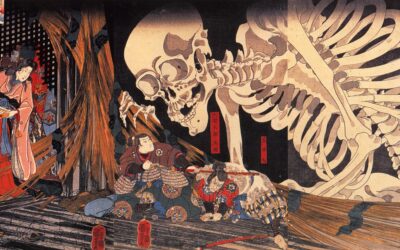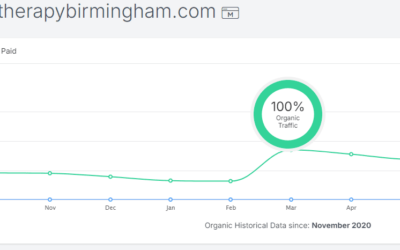Who Was Spider Martin?

The photograph was taken during the civil rights demonstrations of March 1965, sometime between Bloody Sunday and the Selma to Montgomery March. Alabama Media Group
Who was Spider Martin?
In times of great societal upheaval and injustice, the power of visual storytelling can be a catalyst for change, awareness, and healing. The photographs of Spider Martin, particularly his documentation of the Civil Rights Movement and the Selma to Montgomery marches, stand as a testament to the transformative impact of photography in the face of trauma and inequality.
Spider Martin, born James Martin in 1939, was an American photographer who gained recognition for his powerful and evocative images of the Civil Rights Movement. His photographs, particularly those taken during the Selma to Montgomery marches in 1965, have become iconic representations of the struggle for racial equality in the United States.
The Selma to Montgomery marches were a series of protest marches that took place in Alabama, led by civil rights activists such as Martin Luther King Jr., John Lewis, and Hosea Williams. The marches were organized to advocate for voting rights and to protest the systemic discrimination and violence faced by African Americans in the South. Spider Martin, working as a photojournalist for the Birmingham News, was there to capture the essence of these historic events.
One of Martin’s most famous photographs from the marches depicts a line of protesters, silhouetted against a cloudy sky, marching resolutely towards Montgomery. The image conveys a sense of determination, unity, and purpose, embodying the spirit of the Civil Rights Movement. Another renowned photograph shows a group of marchers, including John Lewis and Hosea Williams, kneeling in prayer before the final march to Montgomery. This image captures a moment of spiritual strength and resilience in the face of adversity.
Spider Martin’s photographs not only documented the events of the Selma to Montgomery marches but also humanized the participants and shed light on the brutality they faced. His images of protesters being beaten, gassed, and arrested by state troopers and local police at the Edmund Pettus Bridge on “Bloody Sunday” shocked the nation and galvanized support for the Civil Rights Movement. These photographs exposed the ugly reality of racism and violence, forcing Americans to confront the injustices that were occurring in their own country.
The impact of Spider Martin’s visual storytelling extends beyond the immediate events of the Civil Rights Movement. His photographs have become enduring symbols of the struggle for equality and have played a significant role in shaping public perception and collective memory. They serve as powerful reminders of the sacrifices made by civil rights activists and the ongoing fight against racial injustice.
Moreover, Martin’s photographs have the capacity to promote healing in the face of trauma and injustice. By bearing witness to the courage, resilience, and humanity of those who participated in the Civil Rights Movement, his images inspire hope and provide a sense of validation for the experiences of marginalized communities. They remind us of the progress that has been made while also acknowledging the work that still needs to be done.
The photography of Spider Martin underscores the vital role that visual storytelling plays in raising awareness, sparking change, and fostering empathy. His images have the power to evoke visceral emotions, challenge preconceived notions, and compel viewers to confront uncomfortable truths. They serve as a bridge between the past and the present, connecting us to the struggles and triumphs of those who came before us.
In a world where injustice and inequality persist, the legacy of Spider Martin’s photography remains as relevant as ever. His images continue to inspire new generations of activists, artists, and storytellers who use the power of visual media to shed light on social issues and advocate for change. They remind us of the importance of bearing witness, of using our talents and platforms to amplify the voices of the marginalized and oppressed.
As we reflect on the impact of Spider Martin’s photographs, we are reminded of the transformative power of art and the responsibility we all have to combat injustice in our own lives and communities. His visual storytelling serves as a call to action, urging us to confront the traumas of the past, work towards healing, and build a more equitable future for all.
The photography of Spider Martin, particularly his documentation of the Selma to Montgomery marches and the Civil Rights Movement, stands as a testament to the power of visual storytelling in the face of trauma and injustice. His images have not only captured a pivotal moment in American history but have also become enduring symbols of the struggle for equality. They remind us of the capacity of art to raise awareness, promote healing, and inspire change, and they challenge us to use our own talents and platforms to make a difference in the world.
Bibliography
References: Cox, J. (2015). Witness: The Photographs of Spider Martin. University of Texas Press. Kasher, S. (2010). The Civil Rights Movement: A Photographic History, 1954-68. Abbeville Press. Raiford, L. (2011). Imprisoned in a Luminous Glare: Photography and the African American Freedom Struggle. University of North Carolina Press. Speltz, M. (2016). North of Dixie: Civil Rights Photography Beyond the South. J. Paul Getty Museum. Berger, M. A. (2011). Seeing through Race: A Reinterpretation of Civil Rights Photography. University of California Press. Willis, D. (2000). Reflections in Black: A History of Black Photographers, 1840 to the Present. W. W. Norton & Company. Hansberry, L. (1964). The Movement: Documentary of a Struggle for Equality. Simon & Schuster. Manis, A. M. (1999). A Fire You Can’t Put Out: The Civil Rights Life of Birmingham’s Reverend Fred Shuttlesworth. University of Alabama Press. Further Reading: Adelman, B. (2007). Mine Eyes Have Seen: Bearing Witness to the Struggle for Civil Rights. Time Books. Ciment, J. (2013). Atlas of African-American History. Facts On File. Dierenfield, B. J. (2004). The Civil Rights Movement. Routledge. Eskew, G. T. (1997). But for Birmingham: The Local and National Movements in the Civil Rights Struggle. University of North Carolina Press. Hogan, W. C. (2007). Many Minds, One Heart: SNCC’s Dream for a New America. University of North Carolina Press. King, M. L., Jr. (1958). Stride Toward Freedom: The Montgomery Story. Harper & Row. Lewis, J., Aydin, A., & Powell, N. (2013). March: Book One. Top Shelf Productions. Nunnelley, W. A. (1991). Bull Connor. University of Alabama Press. Pinkney, A. C. (2016). Selma, Lord, Selma: Girlhood Memories of the Civil Rights Days. University of Alabama Press. Young, A. A. (1996). An Easy Burden: The Civil Rights Movement and the Transformation of America. HarperCollins.
Birmingham Arts and Culture






















0 Comments